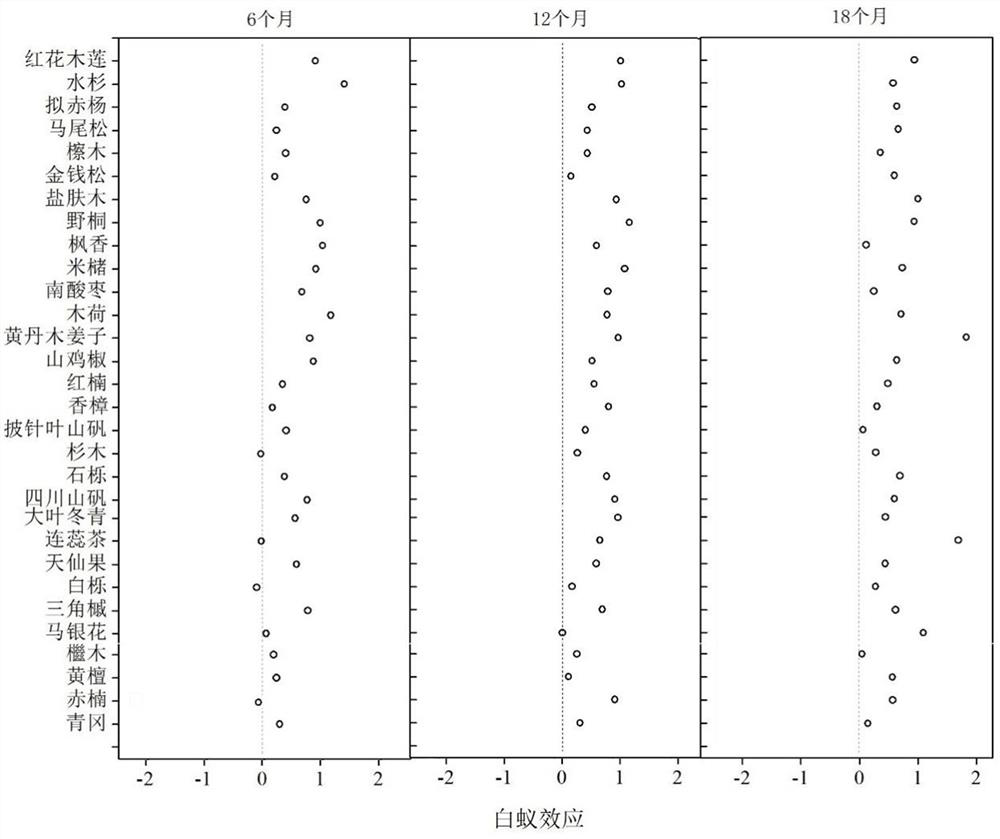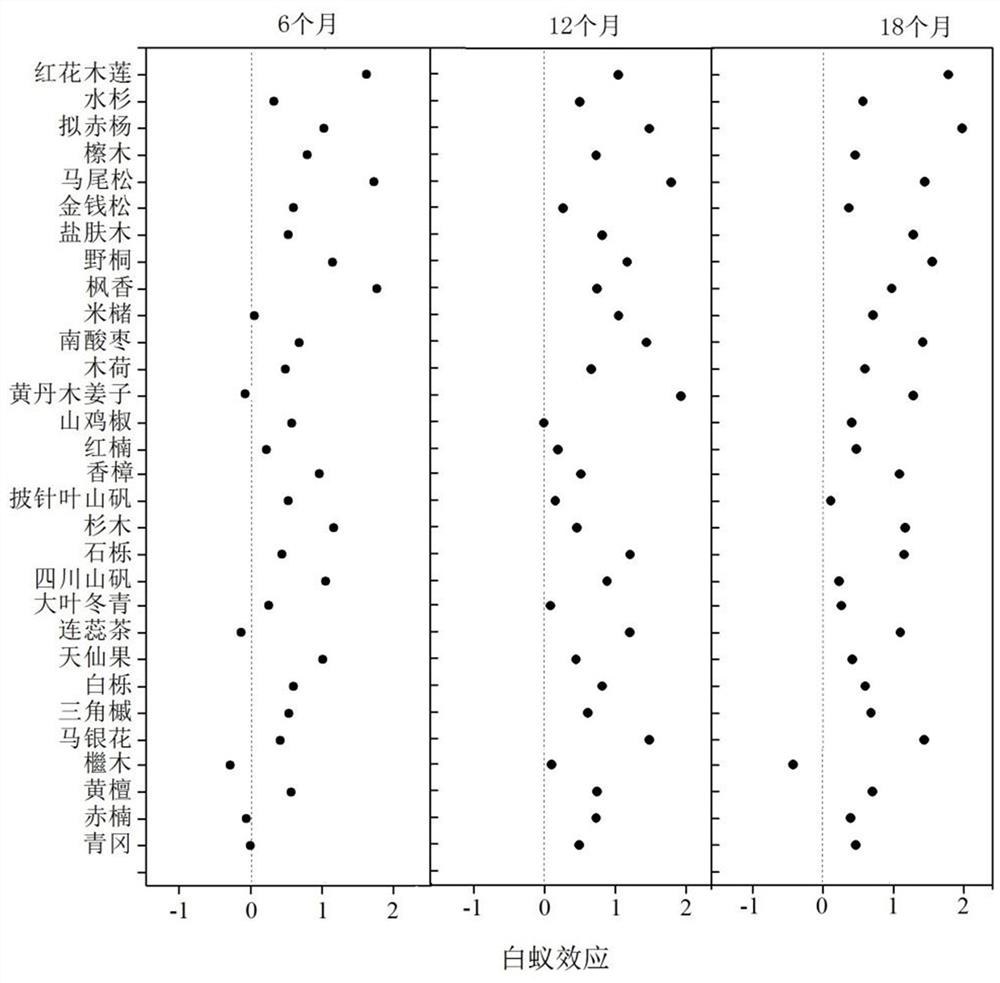Method for evaluating influence of termites on decomposition of forest rotten wood
A termite and rotten wood technology, applied in the evaluation field of forest rotten wood decomposition, can solve the problems of low accuracy and reliability, inability to popularize and use, and difficult evaluation conclusions, etc., to achieve convenient operation, easy grasp and implementation, and improve reliability Effect
- Summary
- Abstract
- Description
- Claims
- Application Information
AI Technical Summary
Problems solved by technology
Method used
Image
Examples
Embodiment 1
[0028] The implementation site is located in Schima superba, Tiantongshan Forest Farm, Yinzhou District, Ningbo City, Zhejiang Province. The experiment time is from January 2017 to July 2020. Three parallel decomposition plots are set up to reduce experimental errors.
[0029] The area of Tiantong forest area is 370hm 2 , there is a large area of typical mature evergreen broad-leaved forest with Schima superba, Lithocarpus glaber (Lithocarpus glaber) and Castanopsis carlesii as the dominant species, and Choerospondias axillaris, maple Fragrant (Liquidambar formosana) is the dominant species of evergreen deciduous broad-leaved mixed forest. The soil is mainly mountainous red-yellow soil, with a pH between 4.4 and 5.1. The soil texture is 6.8% gravel, 55.5% silt and 37.7% clay.
[0030] In a typical subtropical evergreen broad-leaved forest, 30 species were selected for sample collection from October to November 2017. For the sake of experimental standardization, the selec...
Embodiment 2
[0045] The implementation site is located in Cyclobalanopsisglauca, Putuo Mountain Scenic Area, Zhoushan City, Zhejiang Province. The experiment period is from January 2017 to July 2020. The sample area is 20m×30m. Three parallel decomposition sample plots are set up to reduce experimental errors.
[0046] The average temperature in Mount Putuo is 16°C, and the temperature fluctuates between 5.4°C and 27°C throughout the year. The average annual precipitation is 1358.14mm. The soil type is mainly sandy red soil, and the parent material is mostly coarse-grained granite weathered rock. In the typical evergreen broad-leaved forest in this area, Qinggang is the dominant species, and the associated species are Lithocarpus, etc.; evergreen deciduous broad-leaved mixed forests with sweetgum and Celtissinensis as the dominant species are distributed in the valley and the foot of the mountain.
[0047] In order to test the reproducibility of the results, the same 30 species as the Tia...
PUM
| Property | Measurement | Unit |
|---|---|---|
| pore size | aaaaa | aaaaa |
| size | aaaaa | aaaaa |
| pore size | aaaaa | aaaaa |
Abstract
Description
Claims
Application Information
 Login to View More
Login to View More - R&D
- Intellectual Property
- Life Sciences
- Materials
- Tech Scout
- Unparalleled Data Quality
- Higher Quality Content
- 60% Fewer Hallucinations
Browse by: Latest US Patents, China's latest patents, Technical Efficacy Thesaurus, Application Domain, Technology Topic, Popular Technical Reports.
© 2025 PatSnap. All rights reserved.Legal|Privacy policy|Modern Slavery Act Transparency Statement|Sitemap|About US| Contact US: help@patsnap.com


